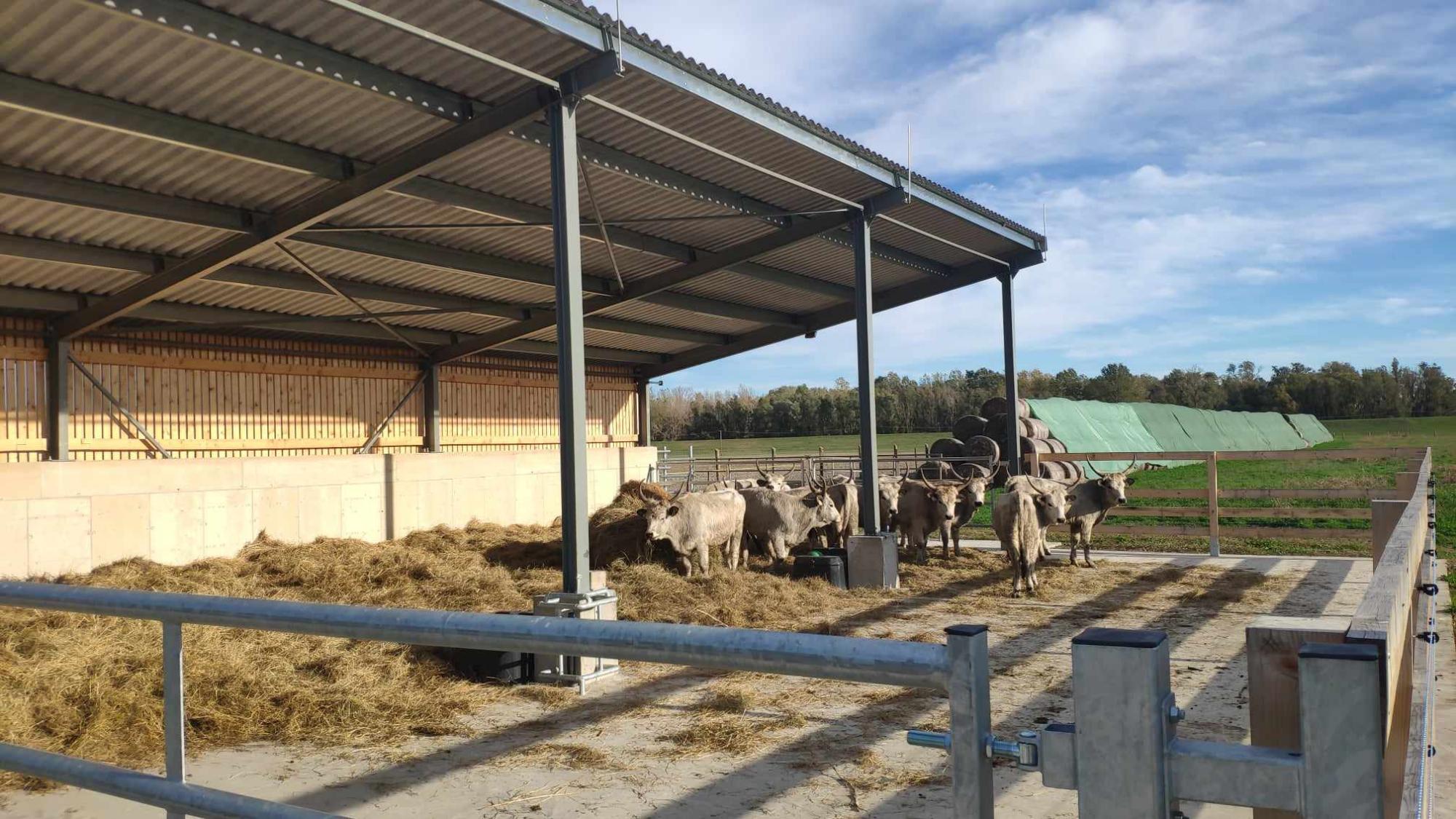The grey cattle have arrived to their new home in Kölked

Grey cattle will once again graze the marsh meadows of the Nagy-rét at Kölked thanks to the Grassland-HU LIFE integrated project. In November 2023, the animals arrived at their new home, the recently opened animal husbandry facility of the Danube-Drava National Park Directorate.
In order to halt the decline of grasslands and improve their natural condition, 15 project partners have joined forces to launch the long-term conservation of Pannonian grasslands and related habitats through the implementation of strategic measures of the National Natura 2000 Priority Action Plan. Within the framework of the project, the Danube-Drava National Park Directorate, among other activities, aims to revive the traditional floodplain grassland management of the the Nagy-rét at Kölked, a 100 hectare floodplain marshland that was once used for grazing. The livestock farm built under the programme will allow livestock farming to continue in this area of outstanding natural value.
The Nagy-Rét is located on the floodplain of the Lower Danube Valley, it is protected by national and European nature protection, it is part of the Danube-Drava National Park, the Béda-Karapancsa Natura 2000 area and the Mura-Drava-Danube Biosphere Reserve. It provides habitats for a number of natural values. Protected plant species include Clematis integrifolia, Siberian iris, fen ragwort. The small to large sinkholes, permanent or temporary waterholes provide ideal breeding habitat for protected amphibian species (e.g. European fire-bellied toad) and feeding areas for many bird species (e.g. black stork, great egret). The area also provides habitat for many protected arthropod species, including a good population of the Large copper, species of Community interest.
The vast majority of grassland is secondary habitat in the Transdanubian region. Most of them were created by livestock farming and human activity, and centuries of grazing have resulted the valuable habitats we have today. In the absence of continuous management, most of the grasslands will become scrubby and then overgrown, so it is important to ensure continuous management to preserve them. The best management method to conserve the natural values of wet grasslands is extensive grazing by cattle. The project has enabled the Danube-Drava National Park Directorate to purchase land and build a livestock facility on it, which will be used as a winter shelter for the herd and also for storing fodder and other management-related tasks. Grey cattle have recently arrived from Drávaszentes to start grazing for grassland management. Grey cattle is a native Hungarian breed, so in addition to land management, the newly established livestock farm will also help to preserve the breed.
Text and photo by: Borbála Dévényi